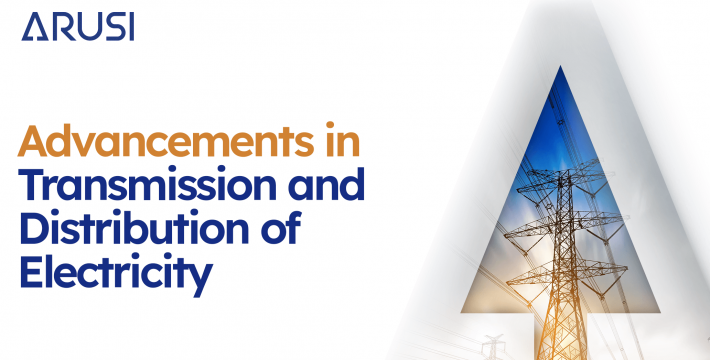
Electricity, the invisible power that modern society has come to heavily rely on, has undeniably evolved since it was first harnessed. Although the basics of generating electricity have been established for centuries, changes in how we distribute and transmit it have brought us leaps and bounds ahead of where we started.
In the early days of electricity distribution, power was generated and used locally. This meant people couldn’t use it outside of their immediate area. Transformers changed the game by allowing voltage to be stepped up for long-distance travel and stepped down when needed for local distribution. The ability to push these currents across grids lets power be generated in one place and transported throughout entire regions.
But just like everything else in this world, technology keeps pushing forward. We’re currently seeing a surge of innovation in transmission and distribution (T&D) technologies that will forever change how we deliver electricity. Here are some key developments:
Smart Grids: The Future of Power Distribution
One of the most significant advancements in recent years has been the development of smart grids. These intelligent energy distribution systems use digital technology to monitor and manage electrical current flow from generation sources all the way to end-users. Smart grids are integrated with advanced sensors, communication networks, and data analytics which optimize power delivery, reduce energy waste, and enhance grid resilience.
Smart grids offer several perks such as better integration capabilities for renewable energy sources, higher energy efficiency output, and more reliable service delivery overall. With real-time information at its disposal thanks to those sensors and analytics previously mentioned, a smart grid can quickly respond to changes in demand as well as predict issues long before they become an inconvenience.
High-Voltage Direct Current (HVDC) Transmission
Another hefty advancement is High-Voltage Direct Current (HVDC) technology, which has increased adoption rates across various applications. HVDC transmits electricity over long distances using direct current rather than traditional alternating current methods. This technology comes with a punch of benefits such as lower transmission losses, improved grid stability, and the ability to interconnect asynchronous AC systems.
HVDC is especially useful for transmitting large amounts of power over long distances, like connecting remote renewable energy sources to heavily populated areas. It can also be used to link up separate power grids which in turn helps further secure electricity supply.
Advanced Transmission Line Monitoring and Control
Upgraded technology in transmission line monitoring and control systems have been vital for improving the efficiency and reliability of power transmission. These advanced systems use sensors, communication networks, and data analytics to constantly monitor transmission lines, detect issues before they escalate, and fine-tune power flow.
Dynamic Line Rating (DLR) systems are an example of this kind of tech. They collect real-time information on weather conditions, line temperature, and more to determine how much electricity can safely pass through at a given moment. By adjusting the rating based on current conditions DLR is able to maximize existing infrastructure’s potential — meaning we won’t have to upgrade or build from scratch as often.
Distributed Energy Resources and Microgrids
Another one is distributed energy resources (DERs) which represent any electricity generation source that isn’t just so happens to be a critical component for optimizing energy distribution overall.
Microgrids are localized power generation and distribution systems developed as complementary technology to DERs. They can operate independently operate on their own or in tandem with the main grid to provide enhanced reliability, resilience, and energy security. By integrating DERs and microgrids into the larger power grid, utilities will improve system efficiency, integrate renewable sources, and manage energy demand more efficiently.
The transmission distribution services hyperlink is an example of how these devices could be used.
Advances in Power Electronics and Energy Storage
Power electronics has played a crucial role in advancing the transmission and distribution of electricity. Power electronics devices like inverters and converters are essential for integrating renewable energy sources and controlling power flow in the grid. They allow electricity to be converted between different formats (like AC to DC), regulate voltage and frequency levels, ensuring stable power delivery.
Energy storage systems such as batteries have become increasingly important for balancing the intermittent nature of renewable energy sources. During low demand periods these storage units can store excess energy generated by renewables (such as solar panels or wind turbines) then release it during high demand periods which helps smoothen out fluctuations in the grid.
Environmental Sustainability and Grid Modernization
With growing concerns over climate change, sustainability has become an integral part of every aspect of human life; including the transmission of electricity. Utilities have made efforts to reduce greenhouse gas emissions, integrate more renewable energy sources, and promote energy efficiency across all their operations.
Grid modernization is a strategy that involves upgrading outdated infrastructure so that they may accommodate new technologies. This approach allows them to better manage distributed energy resources (DERs), implement demand-side management programs (DSM), optimize their overall usage- ultimately reducing their environmental impact.
Closing Thoughts
The advancements made within this field have been remarkable! Driven by technological innovations, evolving consumer needs & environmental considerations — From smart grids & HVDC transmission to advanced monitoring systems & distributed energy resources. These innovations have transformed the way we generate, transmit, and consume electricity.
As we continue to strive towards a more sustainable and resilient energy future, transmission and distribution of electricity will remain at the forefront of our solutions. Embracing these advancements and continually pushing for innovation will help us build an efficient, reliable, and environmentally friendly power grid that caters to our ever-changing needs.


